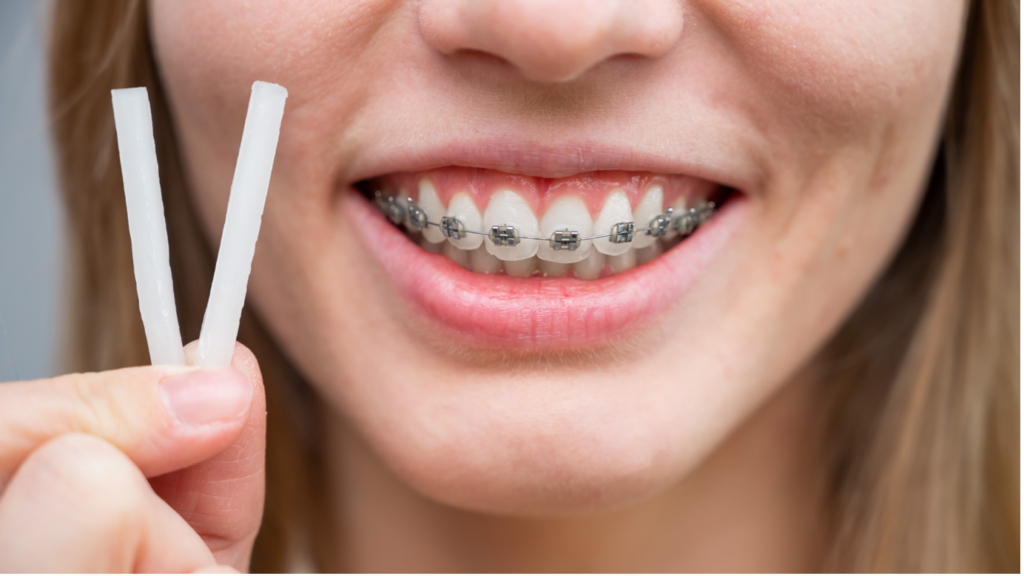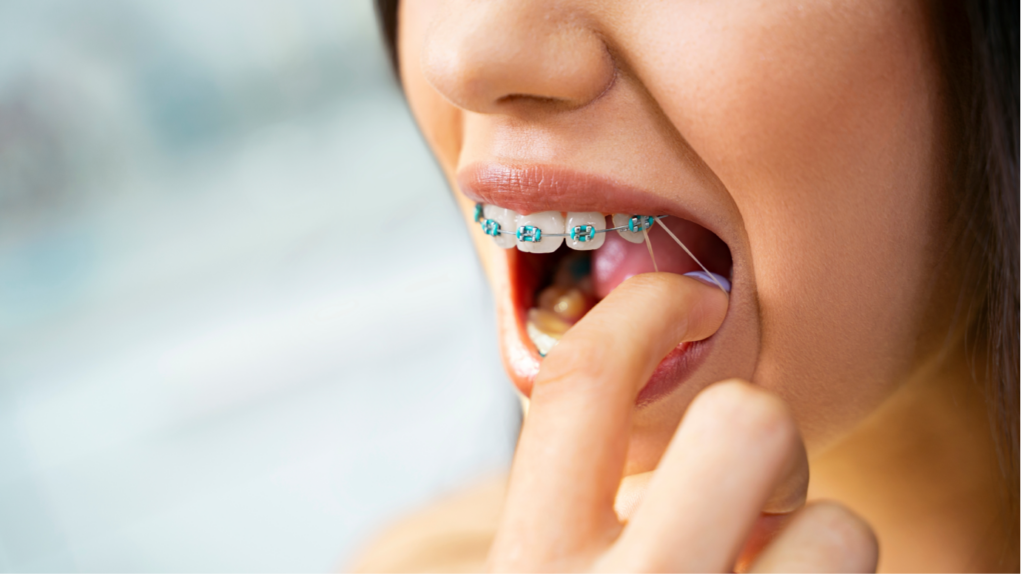When you (or your child) are undergoing orthodontic treatment, you may experience discomfort if the brackets or braces rub against the inside of your lips, cheeks or tongue. While the discomfort may pass shortly as your mouth becomes accustomed to the new sensations, some people do experience some pain and may need orthodontic wax to help.
But what is orthodontic wax and how important is it for your treatment? We’re covering all the orthodontic wax basics to help you have a pain-free journey towards a straight smile.
What is orthodontic wax?
Orthodontic wax is a type of wax that’s specifically designed to relieve pain caused by your braces, as it acts as a barrier between your braces and your lips, cheek or tongue. It is an opaque substance that becomes soft and malleable, which allows for easy placement around the offending bracket to stop it from irritating the inside of your mouth.
Is orthodontic wax the same as dental wax?
Yes, they are. Dental wax is just another name for orthodontic wax – they’re the exact same thing!
When to use orthodontic wax
Your child will not require orthodontic wax for the entirety of their treatment, but rather should use it as an aid to ease discomfort for small periods of time. As you get used to the sensation of braces being in your mouth, your soft tissues toughen up to create a resistance against the rubbing.

How to use orthodontic wax?
Orthodontic wax is made from a hydrophobic (or water repellent) material, making it tricky to use in your mouth’s moist environment. As such, you need to properly prepare your mouth for the wax application. Here’s a step-by-step process of how to prepare and use orthodontic wax:
- Identify which bracket is causing discomfort.
- Take an appropriate amount of wax – it needs to be large enough to cover the bracket, as well as be moulded above/below the bracket. If it is too small, it will not adhere.
- Prepare the wax by warming or rubbing it between your fingers and moulding it into a small rectangular shape to cover the bracket as well as the undercuts above/below the bracket.
- Dry the bracket and surrounding area with tissue paper or a cotton wool bud or ball as thoroughly as possible – if there is any moisture, the wax may not adhere to the bracket.
- Apply the softened wax around the bracket and press it into place.
Does orthodontic wax come off?
Yes, orthodontic wax can come off. While the wax can come off naturally, here’s how you can take it off if you don’t need it anymore:
- Soften the wax to make it easier to remove. Eat a warm meal (like soup) or use a warm washcloth to gently heat the wax.
- Using your fingers, gently peel the wax off your braces by starting at one end and working your way across to the other. Be careful to no dislodge your brackets or wires.
- If there’s remaining wax on the bracket or wire, use your toothbrush to gently scrub it off. Or you can use floss if it’s stuck between two teeth or behind a wire.
- Rinse your mouth to get rid of any residue that might be in your mouth.
Remember, don’t use sharp or pointed objects (like toothpicks) to remove wax from your braces, as this may cause further damage to your wires and brackets.

Can you sleep with orthodontic wax?
Yes, orthodontic wax can be used at night and applied prior to going to sleep. You may find that applying wax to areas that are causing discomfort can help you get a better night’s rest.
Is it okay if you swallow orthodontic wax?
Yes, your orthodontic wax is safe to swallow. While we don’t recommend snacking on your supply, swallowing a small amount can happen naturally and is nothing to be alarmed about. The wax is non-toxic and will naturally pass through your system without you even noticing.
Can you eat with the wax on my braces?
While you can eat with orthodontic wax on your braces, it’s generally a good idea to take it off beforehand. This is because the wax might absorb some of the food. If you’re in a bit of pain, however, then you can keep the wax on while you eat (if it comes off, you may need to replace it after your meal).
Can you put orthodontic wax on a broken tooth?
If you chip or break a tooth, dental wax can be a good solution to avoid cutting your tongue or the inside of your mouth while you wait for your appointment with your dentist. Clean and dry the area before placing a small amount of wax over the edge to smooth. This is not a long term or permanent solution, and you should seek advice from your general dentist as soon as possible. Your dental wax cannot be used to reattach your tooth.
Can you use orthodontic wax for clear aligners?
Absolutely. While clear aligners are less likely to hurt the inside of your mouth and gums than traditional braces, if you’re experiencing any pain or discomfort, using a piece of dental wax can help. Press the wax gently to the offending area in the manner described above. Alternatively, if it is a particular rough edge of the aligner causing the irritation, smoothing it with a simple nail file can also be helpful.
Toothache relief with orthodontic wax
Toothache can be caused by many things – gum disease, tooth grinding, tooth decay – and most of these ailments won’t improve by using orthodontic wax. On the other hand, if a damaged filling or chipped or cracked tooth is the cause of your toothache, orthodontic wax may help you manage the sensitivity and pain in the short term. If you have a cracked or damaged tooth, please book a consult with your general dentist as soon as you can to have it repaired.

Are there alternatives to orthodontic wax?
If you’re experiencing discomfort but have found that you’re out of wax for braces, there are some temporary solutions you can try. A small amount of sugar-free chewing gum rolled into a small ball and applied in the same way as your regular wax can be a helpful solution, but this should only be temporary. Wax and chewing gum are not the same in the long run.
Other considerations
You may need to reapply your orthodontic wax throughout the day as you eat and speak. You can also encourage the irritated area of the mouth to heal and avoid ulcers by rinsing your mouth with salt water at least once a day. This will help your mouth adjust to the treatment as well.
How much orthodontic wax your child uses will depend on their level of discomfort, but you can ask your orthodontist for more information about whether you should get some. We often find that the discomfort passes within a day or two as the cheek starts to heal.
Want more information about orthodontics for kids and teens? Then you can download our free ebook. If your child hasn’t yet started their treatment and you want to get the ball rolling, then you can use our Finder Tool to search for an orthodontist near you.










